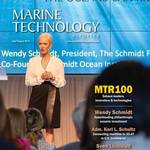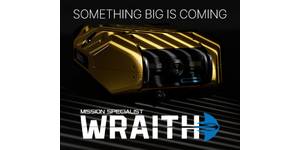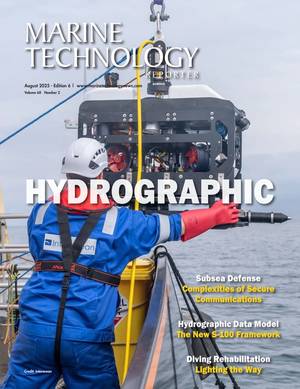Subsea Oil and Gas Production
There are many underwater oil and gas fields all over the world and subsea oil and gas production refers to the industry that explores, drills and develops oil and gas fields in these locations. Anything related to this industry is referred to using the “subsea” prefix – subsea developments, subsea projects, subsea wells and so on.
Oil and gas fields can be situated either in shallow water or deep water, and specific facilities are created for each type. Shallow water (shelf) indicates shallow depths and in this case, saturation diving (diving technique used in order to avoid the “bends”), jackup drilling rigs (mobile platforms that rest on supporting legs) and fixed offshore structures are used. When it comes to deepwater, the projects are located deeper than 600 feet undersea, and technology such floating drilling vessels and oil platforms are used, and the underwater vehicles are exclusively unmanned, as vessels with human occupants are not practical.
Subsea oil and gas production began in 1947 in the Gulf of Mexico, where Kerr-McGee completed the first offshore well. The idea of developing this type of production gained popularity 30 years later, when developers thought of placing exploitation and production equipment encapsulated in a sealed chamber directly on the seabed. As a result, hydrocarbon would be produced and it would float to a processing facility onshore or offshore, whichever would be most practical. This is how subsea engineering began, together with all the systems and technology associated with this field.
Any equipment functioning below water level would be called subsea production systems, and subsea oil and gas production technology falls under this name as well. The first subsea completions were developed in under 1,000 feet deep and they were shallow water completions, while those at depth greater than 1,000 feet were known as deepwater completions. Today, subsea oil and gas production takes place at more than 3,000 meters deep (10,000 ft.).
The exploitation evolved in this direction as the reserves of oil and gas in shallow water areas have become rare and the industry moved to deepwater, where its activity encountered many challenges. Deepwater completions have developed exponentially since 1995, thus the required technology and software kept the pace.
The subsea production system
Whether the subsea oil and gas production takes place in shallow or deepwater, both activities require subsea production systems. These systems are made of several components – a completed well, seabed wellhead, subsea tie-in to flow line system, a production tree and underwater equipment and control facilities that help operate the well. There can be simple, offshore or onshore systems, based on a single satellite well, featuring a flowline linked to a fixed platform, or complex systems, containing several wells template or spread around a manifold.
The latest underwater technologies facilitate the economical exploitation of gas and oil from deep waters and they are generally called subsea production systems, encompassing drilling, and field development and operation equipment.
Hydrographic survey for the subsea oil and gas production industry
The underwater survey for positioning of the wells is vital for subsea oil and gas production industry. The hydrographic survey includes soil investigation and geophysical and geotechnical field development survey. These surveys have the purpose of identifying potential hazards for the economic activity, as well as engineering constraints, assessing the impact of subsea activities on the environment and determining ocean floor and sub-bottom conditions.
Subsea surveys include setting vertical route profiles, assessing the features of the seabed, establishing a contour plan and particularities of undersea formations, such as reefs. They aim to locate possible obstructions, and identify additional factors that may interfere with the exploitation in good conditions of that particular underwater field area. Laboratory testing and geotechnical sampling is also required to establish the exact mechanical properties and nature of the underwater field where the extraction facility is situated, as well as the areas surrounding pipelines and other platforms.
Equipment used in subsea oil and gas production industry
As previously mentioned, the subsea oil and gas production industry requires specific technology that varies with the depth at which the exploitation process takes place. In order to move this equipment, certain types of vessels are required, which have to feature diving equipment for shallow water work, and unmanned technology for deep water exploitation. Many precautions and safety standards need to be respected, as installations used in offshore economic activities are sophisticated and extremely heavy.
Two types of processes are involved in subsea installations – the installation of underwater equipment, such as trees and templates, that can be achieved using floating drilling rigs, and the installation of pipelines and risers, with the aid of an installation barge that uses J-lay, reel lay or S-lay.
Underwater power supplies for oil and gas production
Power supplies are essential for any type of underwater activity and mainly for the oil and gas industry. A power supply is necessary for processing the entire well stream on the seabed and the lack of it leads to halting all underwater processing operations. Some of the power supplies used in underwater oil and gas exploitation are EPU (electrical power unit), UPS (uninterruptable power supply) or HPU (hydraulic power unit).
Other aspects of subsea oil and gas production
All activities of system engineering require qualified personnel, with proper training. Some companies offer on-the-job training for new entry positions, but usually employers search for personnel with at least a university degree. Undersea system engineering encompasses equipment application and development, production system design and system integration.
Well testing is also important to confirm the efficacy of a reservoir and to locate any problems that may interfere with the long-term production. Sometimes, well extended tests are performed to asses the potential for development of a certain well.
Inspection and maintenance of the oil and gas production facilities must take place periodically. This is accomplished with the use of ROVs for surveys and repairs of deepwater systems, and divers, for missions taking place in shallow waters. If the equipment is surface based, then the tools and methods necessary to repair it would be similar to those used on onshore facilities.















 August 2025
August 2025



